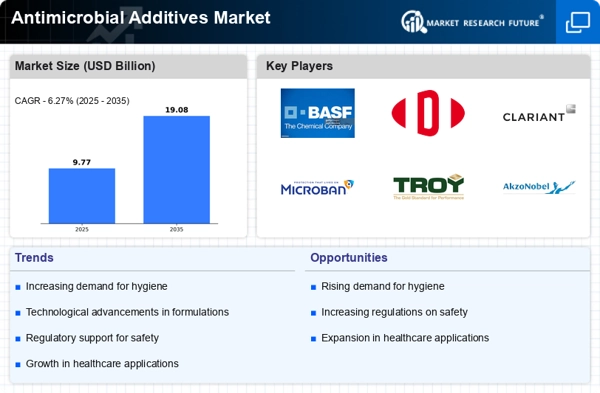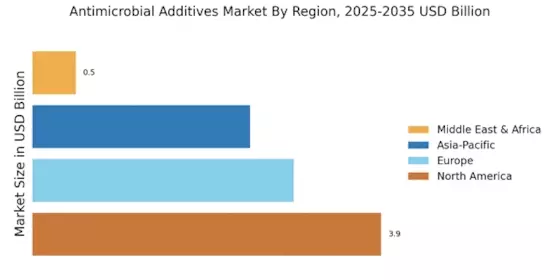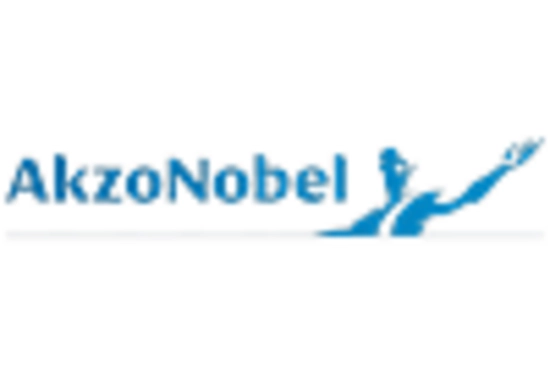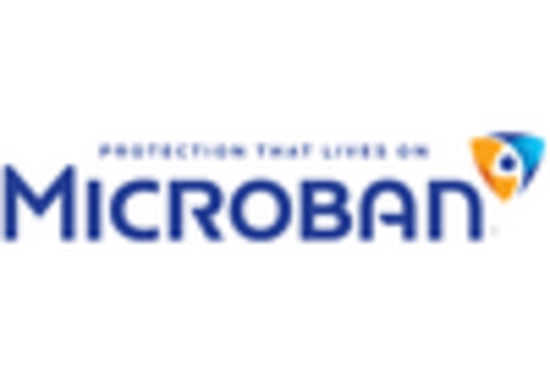The Antimicrobial Additives Market is currently characterized by a dynamic competitive landscape, driven by increasing consumer awareness regarding hygiene and the growing demand for antimicrobial solutions across various industries. Key players such as BASF SE (Germany), DuPont de Nemours Inc (US), and Microban International Ltd (US) are strategically positioned to leverage innovation and technological advancements. BASF SE (Germany) focuses on developing sustainable solutions, while DuPont de Nemours Inc (US) emphasizes its commitment to research and development, aiming to enhance product efficacy. Microban International Ltd (US) is actively pursuing partnerships to expand its market reach, indicating a trend towards collaborative growth in the sector. Collectively, these strategies contribute to a competitive environment that is increasingly oriented towards innovation and sustainability.
In terms of business tactics, companies are localizing manufacturing to reduce lead times and optimize supply chains, which appears to be a critical factor in maintaining competitiveness. The market structure is moderately fragmented, with several players vying for market share, yet the influence of major companies remains substantial. This competitive structure allows for a diverse range of products and solutions, catering to various end-user industries, including healthcare, construction, and consumer goods.
In August 2025, DuPont de Nemours Inc (US) announced a strategic partnership with a leading healthcare provider to develop antimicrobial coatings for medical devices. This collaboration is significant as it not only enhances DuPont's product portfolio but also positions the company at the forefront of innovation in healthcare applications, potentially leading to improved patient outcomes and reduced infection rates.
In September 2025, Microban International Ltd (US) launched a new line of antimicrobial additives specifically designed for textiles, targeting the growing demand in the apparel industry. This move is indicative of the company's strategy to diversify its offerings and tap into emerging markets, reflecting a keen awareness of consumer trends towards hygiene and safety in everyday products.
In October 2025, BASF SE (Germany) unveiled a new range of bio-based antimicrobial additives, aligning with global sustainability goals. This initiative not only enhances BASF's commitment to environmental stewardship but also positions the company as a leader in the sustainable additives market, potentially attracting environmentally conscious consumers and businesses alike.
As of October 2025, the competitive trends in the Antimicrobial Additives Market are increasingly defined by digitalization, sustainability, and the integration of artificial intelligence in product development. Strategic alliances are becoming more prevalent, as companies recognize the value of collaboration in driving innovation. Looking ahead, competitive differentiation is likely to evolve from traditional price-based competition towards a focus on technological advancements, product innovation, and supply chain reliability, suggesting a transformative shift in how companies approach market challenges.


















Leave a Comment